#anglesey Wales map
Explore tagged Tumblr posts
Text
Post-Apocalyptic Magical Britain - First Post
(Tagging @arcenciel-par-une-larme, @merthwyn, @kaleb-is-definitely-sane and @narulanth, who I've discussed this idea with).
The exact backstory of how magic comes back and how the different states form is something I haven't decided yet, but I have more-or-less hashed out the different states and where they are; their territory is based around this map of the historic counties.
Also, this post is massive, hence the "keep reading".
Annwn
Territory: Cardiganshire, Carmarthenshire, Pembrokeshire
Language: Welsh Faerie-Tongue
Capital: Caer Siddi
Leader: Gwyn ap Nudd
The kingdom of y tylwyth teg (Welsh faeries, literally "the fair family") upon earth, led by their king, Gwyn ap Nudd. Towns are largely abandoned and have been reduced to forests of oak, beech and ash, with the tylwyth teg living beneath lakes and inside barrows and emerging at dusk and disappearing at dawn - to humans travelling by day, the whole land has an eerie quality. Annwn is largely set apart from the wars of its endlessly-feuding neighbours, Cymru and Wales, with the fair folk taking part in their own lives, but during winter, ap Nudd leads sky-borne raids of his spectral white hounds, the Cwn Annwn, targeting both of them and sometimes ranging elsewhere.
Clan Bean
Territory: southern Ayrshire
Language: Scots
Capital: Bennane Head Cave
Leader: Sawney Bean
One of the many folklore figures brought to life was Sawney Bean, the leader of a clan of cave-dwelling cannibal bandits born of incest; while Scotland was collapsing, he and his children assembled a host of outlaws and ne'er-do-wells, and with them he became the ruler of a substantial territory. As loathsome as he and his clan are, they have become adept at using the woods and moors to lay ambushes against invaders, and thus they control the land - but only this land, as their attempts at open-field battle outside their terrain have always been miserable failures. Their settlements are largely caves or clusters of lean-tos, they have little economic activity beside foraging, hunting and robbing travellers foolish enough to pass through the area and they recognise no law but "Old Sawney".
Clan MacLeod
Territory: Isle of Skye, Isle of Lewis
Language: Scots Gaelic
Capital: Dunvegan Castle
Leader: Norman MacLeod
When magic returned, the leaders of Clan MacLeod used the last wish of the Fairy Flag to summon a faerie host to their side, and they promptly allied with them, allowing them to take over the two islands they live on. Today, their political system is well-established: human daughters marry elfin princes and fae princesses become the wives of Adam's sons, and the faerie hills are left undisturbed (save for a payment of food for aid in war) in exchange for the faeries leaving humans alone. The chieftain of Clan MacLeod governs the islands according to clan law codes and his own will, while the people dwell in villages and make their living by keeping sheep, growing oats and catching fish (the society has a broadly 18th-century level of technology). They frequently raid their neighbours (who will be covered later on) and prevail through fae magic.
Cymru
Territory: Anglesey, Caernarfonshire, Denbighshire, Flintshire, Merionethshire
Language: Welsh
Capital: Dinas Emrys
Leader: Owain Glyndwr
When Owain Glyndwr, the great magic-wielding rebel prince of Wales, arose with magic, he went to Cardiff and proposed that he be instated as king and use the Cyfraith Hywel as their laws (complete with slavery, no inheritance for women and no citizenship for immigrants until the fourth generation); the people there were equally outraged and amused. He instead went to the mountains with his followers, an increasingly large band of Welsh-speaking fanatics, and set up his own castle atop Dinas Emrys, the mountain of Myrddin (better known to the English as Merlin). From there, he wages constant war against Wales with both his troops, his tactical ingenuity and his magical powers (he can control the weather and become invisible) while governing as he promised over a population of village-dwelling sheep farmers with a Late Medieval level of technology (Dinas Emrys has grown into a town of some size and sophistication under him).
East Anglia
Territory: Cambridgeshire, Essex, Huntingdonshire, southern Lincolnshire, Norfolk, Suffolk
Language: English
Capital: Norwich
Leader: Tom Hickathrift
With the return of magic, the ancient ecologies came back, and the fens were revived, drowning much of the region. Three centres of civilisation (for a certain definition; all are of an Early Modern technological level) persist - Walsingham, where Our Lady's presence wards off supernatural horrors, Cambridge, where much of the town has holed up inside the university, and chiefly Norwich, where Hickathrift leads a band of monster slayers, with Hereward the Wake as his second-in-command. And there are many monsters to slay - Lantern Men (ghosts who lead travellers in the marshes astray), the Shug Monkey (a half-dog, half-monkey creature in southern Cambridgeshire), child-eating mermaids in pools, and above all, Black Shuck, the dread hellhound who appears in thunderstorms to maim and kill. Outside the three towns, most settlements are fishing and herding villages, in a High Medieval or lower technological state due to their isolation and living in terror of the demons of the swamp.
Elphame
Territory: Dumfriesshire, Kirkcudbrightshire, Wigtownshire
Language: Scots
Capital: Mid Gleniron
Leader: The Fairy Queen
The territory of the faeries in the Scottish Lowlands, given to them by William Wallace in exchange for her aid in the war against the democratic government of Scotland. They now inhabit its hills and barrows, emerging by night in the land that (since Wallace's Scotland took them all) is nearly devoid of humans to dance atop the moors; humans who do trespass there find themselves imprisoned and enslaved in Faerie-Land. It retains warm relations with Scotland, but every other nation dreads interacting with them for reasons that should be clear.
Highland
Territory: Argyllshire, Cromartyshire, Inverness-shire, northern Perthshire, Ross-shire, Sutherland
Language: Scottish Gaelic
Capital: Schiehallion
Leader: The Cailleach
This land has been taken by the Cailleach, the Gaelic goddess of winter, and it shows. The entire landscape is an austere snow-blanketed pine forest where wolves howl, deer and boar cavort and eagles make their nests, with only a few human settlements (most of them post-apocalyptic farmsteads) amidst the huge numbers of fae folk, kelpies, sluagh and so on, who all pay fealty to her in her court at Schiehallion. She endeavours to spread her territory, and has several times made war against Scotland for that end, but has thus far been rebuffed - her greatest enemy currently, however, is the Nordøjar, who have established a colony in the Highlands which they must constantly struggle to maintain.
Isle of Man
Territory: Isle of Man
Language: Manx, English
Capital: Peel Castle
Leader: Manannan
In times of trouble and the rise of magic, the sea god Manannan returned to the island, protecting it with his mists as he did in ancient times. The island, however, came to have a different folkloric denizen - Sir Francis Drake, who betrayed the English Crown in order to serve King Arthur and had his loyalty to Britain (and his heart) destroyed by being rebuffed by Arthur. Now, he is a pirate, and uses Manannan's mists to hide his crew (and that of other Manx privateers) while they retreat from the ships and coastal villages they raid. Hence, the Isle of Man is now full of nests of pirates (with 16th-17th century technology and clothes) sharing and selling what they have taken - food, clothes, livestock, valuables, human captives - in the midst of a countryside thick with glashtyns, bugganes and other such monsters.
Kernow
Territory: Cornwall
Language: Cornish, Briton
Capital: Tintagel Castle
Leader: Sir Lancelot, Sir Mertraut/Mordred
When King Arthur was revived with his wife, Lancelot and Mertraut (the latter better known by his French name, Mordred) still lusted after Gwenhwyfar (again, better known by her French name, Guinevere), which boiled over when Arthur offered Lancelot anything for his victory against the United Kingdom, and Lancelot asked for Gwenhwyfar. Thus, Lancelot and Mertraut rebelled, leading an army of spriggans, giants, mermaids, giant black cats and so on alongside Cornish humans, and with Lancelot going to his foster mother, the Lady of the Lake, in Dozmary Pool, receiving a sword of the grade of Excalibur. They are perpetually at war with Arthur and his kingdom of Logres, but have had little success; Lancelot and Mertraut quarrel with each other frequently, and are delaying the question of who will receive Gwenhwyfar if they win. The two are equally divided in ruling their land in non-military matters, which (in the few surviving human settlements) has a High Medieval technological level and an economy built on fishing and sheep-herding.
Kingdom of England
Territory: Leicestershire, northern and central Lincolnshire, Northamptonshire, Nottinghamshire, Rutland
Language: English
Capital: Kenilworth Castle
Leader: Queen Gloriana
The remnants of England, this land - Elizabethan in aesthetics and technology, and with an agrarian economy and several substantial towns, the greatest of which is Leicester - is ruled by Gloriana, the deified ever-virgin spirit of Queen Elizabeth I. The rest of the land is governed feudally, with territory being given out to her subordinates, such as Francis Walsingham and Robert Dudley (with the notable exception of Sir Francis Drake, who decided that Arthur commanded a higher loyalty than Gloriana. She is the primary force preventing the Republic of York from conquering territory further south, but still finds time to feud with Mercia to the west (both are of the opinion there is room for only one queen in the Midlands) and broker deals with the United Kingdom in the hope of obtaining royal treasures from the Tower of London (a futile attempt, as the Tower of London is blocked off from mortal visitation due to the density of ghosts). The greatest thorn in her side, however, is Robin Hood, the de facto leader of northern Nottinghamshire who continues to rob from the rich to give to the poor.
Kingdom of Scotland
Territory: northern Ayrshire, Buteshire, Clackmannanshire, Dunbartonshire, East Lothian, Lanarkshire, Midlothian, Peeblesshire, southwestern Perthshire, Renfrewshire, Selkirkshire, Stirlingshire, West Lothian
Language: Scots
Capital: Edinburgh
Leader: William Wallace
When William Wallace returned and led the army that secured Scottish independence, he expected to be given the crown in return; he was not, and so civil war broke out. After agreeing to give away land in exchange for alliances, he ousted the democratic faction from Scotland and installed himself as king. The land now has a High Medieval technology level, a vassalage-based political system where lairds and earls swear loyalty to Wallace in exchange for being given land (including Michael Scot, who has been pledged his birth county of Selkirkshire in perpetuity), and an economy based on farming oats and sheep. The land is perennially in one war or another, usually with the Cailleach to the north or the Reavers to the south.
Logres
Territory: Devon, Dorset, Gloucestershire, Somerset, Wiltshire
Language: Briton
Capital: Camelot
Leader: Arthur
One of the first signs of the return of magic was Arthur arising from Glastonbury Abbey with a small number of loyal knights, and quickly defeating the United Kingdom (notwithstanding the schism detailed above). Thus, he has developed a High Medieval kingdom in the West Country, where the peasants (the people have adapted to this lifestyle under Arthur's wise and benevolent leadership) grow wheat and keep cattle and sheep, in exchange for defence by the knights in their castles - or that would be the case, if the knights were not perpetually at war with Kernow. In addition, they have also at times made war with Mercia, due to being modern representatives of the Saxons Arthur hated, but upon discovering them to be Christian he is largely at peace with them.
Mercia
Territory: Derbyshire, Shropshire, Staffordshire, Warwickshire, Worcestershire
Language: Old English
Capital: Coventry
Leader: Lady Godiva
This territory is inhabited by pre-Conquest Englishmen, and has all the appropriate trappings - people live in longhouses, have an agrarian economy and an Early Medieval level of technology, speak Old English and practice Christianity in small stone churches. Their leader, Lady Godiva, has cultivated good relations with both Wales and Cymru, becoming skilled at playing them off against each other so they do not trouble her, has historically fought with (but is now allied with) Logres and now has her main enemies in the Kingdom of England and the Republic of York, both of which her trained bands of warriors fight vigorously.
Nordøjar
Territory: Caithness, Orkneys, Shetlands
Language: Norn
Capital: Kirkavå
Leader: Assipattle
The Northern Isles (or Nordøjar, as they are now known) are the islands off the tip of Scotland, united in a federation by the hero Assipattle, who from his seat in Kirkwall (as it used to be known) persuaded the inhabitants of the isles to renounce Christianity and become Norse, raiding the seas in longships as they plough the land while living in longhouses (their main economic activities aside from raiding are peat digging, fishing and sheep-herding). Their usual targets are various areas around Scotland, although they have ranged further south on occasion, and frequently sell their wares on the Isle of Man. They are opposed by the Kingdom of Scotland and the Republic of Aberdeen, but are nonetheless largely able to raid due to their maritime skill and Assipattle's host of creatures such as trows, the wulver and the dread nuckelavee. However, their greatest enemy is the Cailleach, whose forces they constantly struggle against as they seek to maintain their Caithness colony.
Reaver Lands
Territory: Berwickshire, Cumberland, Northumberland, Roxburghshire
Language: English, Scots
Capital: Liddesdale
Leader: None
The Border is a wasteland of tree-bare hills, populated chiefly by sheep, ponies and raiding parties both human and otherworldly. On the human side are the Border Reavers, the pony-riding bandit clans who live in turf cabins and stone towers and ride over the hills to steal the livestock of or take revenge on some other clan. On the otherworldly side is the Fairy Rade, the hosts of faerie archers mounted on white horses with harnesses jingling with bells, who come hunting through the night. Mediating between the two is Thomas the Rhymer, the faerie-gifted poet-prophet who knows the ways of both sides. Only fools or the desperate travel through this land; everyone else who can uses boats around the region. While it has no true leader or capital, Liddesdale is the centre of the region and the most common point of gathering.
Republic of Aberdeen
Territory: Aberdeenshire, Angus, Banffshire, Fife, Kinross-shire, Kincardineshire, Morayshire, southeastern Perthshire
Language: Scots, English
Capital: Aberdeen
Leader: Martha Seward (no, that's not a folklore character, yes, that's intentional - you'll see why)
The territory controlled by the democratic faction, ousted from Edinburgh by William Wallace's troops. The economy here is largely industrial - or rather, attempting to be industrial, seeing as even steam power is increasingly failing. Many cities (in which the majority of people live) are derelict, and while the nation still professes democracy, the "emergency government" has now held power for nearly ten years. The nation's chief ally is the United Kingdom (hence the perception of them as traitors by Scottish nationalists, who hence sided with Wallace), another relict modern democracy, but which can help them little against the attacks of the Cailleach and Assipattle's raiders - however, those same attacks mean that the Kingdom of Scotland rarely has time to attack them.
Republic of York
Territory: Cheshire, Durham, Lancashire without the exclave, Westmorland, Yorkshire
Language: English
Capital: York
Leader: Mother Shipton
One of the larger and more successful states to come out of the collapse, the Republic of York has been given power by a few factors - Mother Shipton's prophetic gifts giving them the ability to make excellent political decisions, a relatively undamaged economy (technology has regressed to "just" the 19th century, and the aesthetics, culture and economy of the society are largely Victorian) and a large base of land and population. Thus, they annexed much of northern England, but have been running out of steam for a few reasons - a long and fruitless war in the Reaver Lands, their technology slowly breaking down, and a crushing defeat delivered to them by the Kingdom of England. However, they remain powerful, and hence are unperturbed by possessing few allies; they need little other than themselves.
United Kingdom
Territory: Bedfordshire, Berkshire, Buckinghamshire, Hampshire, Hertfordshire, Kent, Middlesex, Oxfordshire, Surrey, Sussex
Language: English
Capital: London
Leader: Winston Churchill
The remnant of the old United Kingdom, whose failure to adapt to magic and the end of modern technology meant they kept experiencing defeat after defeat and a steady loss of territory, reducing them to the southeast corner of England, until their leaders realised that the Second World War was now English folklore. Thus, they summoned an avatar of Winston Churchill to lead them, and now make their tanks, guns and planes work by magic. They have hence been able to win victories - a naval operation in Essex and an overland operation in the New Forest (which at the time was a de facto independent territory ruled by Yernagate and populated mainly by pixies) have had promising results, and an attack on Logres is in the works. The price for the average citizen, however, is steep - to summon the spirit of the Blitz, people live on rationed food in air raid shelters and bombed-out houses and Winston Churchill is king in all but name.
Wales
Territory: Brecknockshire, Glamorgan, Herefordshire, Monmouthshire, Montgomeryshire, Radnorshire
Language: English, Welsh
Capital: Cardiff
Leader: Joseph Morgan (also not a folklore figure; that's important)
The last true democracy and one of the last modern societies in Britain, Wales is a largely urban and industrial society (although their cities and industry are rapidly crumbling), struggling mightily against Cymru and Annwn - however, with the aid of Davies Sirevan and Jack of Kent, their resistance is successful.
4 notes
·
View notes
Text

I love this. It's Wales as a Mario map. Super Wales World. I went to the lighthouse on Anglesey last summer (top left island) and also ended up (by sheer mistake) in that town with the ultra long name (right of the lighthouse). Which is a lie by the way! Llanfairpwllgwyngyllgogerychwyrndrobwllllantysiliogogogoc is how it is called (yeah I had to copy and paste it). It was a Victorian tourist invention and it translates in English to St Mary's Church in the Hollow of the White Hazel near a Rapid Whirlpool and the Church of St. Tysilio near the Red Cave.
Credit: The geography pin/reddit
2 notes
·
View notes
Text

Centre for Poetry and Poetics, Sheffield, Presents:
Centre for Poetry and Poetics: Zoë Skoulding - Mendoza - Harriet Tarlo
CPP/UoS Launch of Cut Flowers 2, Guillemot Press, 2024 by Harriet Tarlo
27th of February, 6pm
Diamond, Lecture Theatre 2, University of Sheffield
Zoë Skoulding - Mendoza - Harriet Tarlo
Mendoza is a Northumbrian poet and researcher. They describe their creative practice as ‘frass’, from the German word fressen, which means "to devour"; collecting, hoarding and (metaphorically) consuming found entomological texts, they reconstitute these texts as poetry, mapping the world through their own embodied language in which familiar and unfamiliar terrain is disrupted. In doing so, they are liberated from neurotypical modes of thinking, de-constructing & (re)constructing the ‘self’ through the language of insects as a necessary act of nonconformity.
Publications include: “WINDSUCKERS & ONSETTERS: SONNOTS for Griffiths” collaboration with Peter Manson: Materials, 2018; “the science of poetry : the poetry of science” Linus Slug / Peter Manson broadside, 2015 and “Type Specimen: An Observant Guide To Linus Slug”, Contraband, 2014. Mendoza’s poetry can be heard at the Archive of the Now
Zoë Skoulding is a poet, performer, translator and literary critic with an interest in ecopoetics. Her sixth and latest collection of poems is A Marginal Sea (Carcanet Press, 2022), shortlisted for Wales Book of the Year, following Footnotes to Water (2019), which was a Poetry Book Society Recommendation and won the Wales Book of the Year Poetry Award 2020. In 2020 she also published A Revolutionary Calendar (Shearsman). She received the Cholmondeley Award from the Society of Authors in 2018 for her body of work in poetry. She is Professor of Poetry and Creative Writing at Bangor University and lives on Ynys Môn / Anglesey.
Harriet Tarlo’s poetry is published with Shearsman Press, Etruscan books and Guillemot Press. She collaborated for over ten years with the artist Judith Tucker, exhibiting widely here and abroad and publishing five artists’ books with Wild Pansy Press. Her most recent publications are Cut Flowers I and II (2021, 2024); with Judith Tucker, Saltwort (2022) and with Kym Martindale, Spillways (2022). She edited the influential anthology The Ground Aslant: An Anthology of Radical Landscape Poetry (Shearsman, 2011). She is a Professor of Ecopoetry and Poetics at Sheffield Hallam University.
For those attending online: please log in by 6.20pm:
meet.google.com/qft-frii-fsj
Event curated by Agnes Lehoczky.
Recording is available now:
youtube
0 notes
Text
London-Holyhead Mail in Anglesey
The very earliest "Mail" system started during the reign of Henry VIII taking official documents from London via Chester and the coast road to the port of Holyhead. This was crucial for maintaining communication between the English court and officials in Wales and Ireland. The post road ran over Lavan Sands and through Beaumaris at first, and thus it was in 1675 when John Ogilby made a map of it. Later its line was changed a little, the post road ceased to cross Lavan Sands, and went from the Porthaethwy Ferry through Penmynydd.
Various Postmasters were appointed a stages along the route who had to supply the horses for the Royal Messenger and a Postboy to show him the way and return the horses from the next staging post. The Post Masters were often Innkeepers. By the time of Charles I demand was such from the public that the Royal Mail was made available to all, or at least those who could afford to pay. When a public postal service was first introduced along these routes in 1635, letters were carried between ‘posts’ by mounted post-boys and delivered to the local postmaster. The postmaster would then take out the letters for his area and hand the rest to another post-boy to carry them on to the next ‘post’. This was a slow process and the post-boys were an easy target for robbers, but the system remained unchanged for almost 150 years.
In 1720, one Ralph Allen from Bath took contracts for parts of this system, made it more efficient, and made a lot of money.
The next stage of development came with John Palmer, also from Bath, who persuaded the then Chancellor William Pitt that it would be a good idea to carry the Mail by stagecoach. Safer also as the Postboys were always at risk of attack. Although the Post Office were against the idea, Palmer went ahead on his own and developed a network of routes to carry the Mail by specially designed coaches. The London Holyhead route was one such. In 1785 the Post agreed to take over the running of the service. Each Mail coach had priority on the route, paid no Turnpike dues and the Mail was protected by an armed Royal Mail Guard. Mail Coaches left the Swan with Two Necks Inn in London promptly at 8.00pm every evening and arrived at Holyhead 45.5 hours later. Nantwich and Tarporley were stopping points for the team of four horses to be changed as was Chester but there the stop included a meal break.
Over time the route was changed to miss out the dangerous crossing of the River Conway and the mountainous North Wales coast to an easier one via Shrewsbury thus the Mail coaches no longer came through Cheshire. It also shortened the journey to about 25 hours.
The Act of Union 1800, which unified Great Britain and Ireland, gave rise to a need to improve communication links between London and Dublin. A parliamentary committee led to an Act of Parliament of 1815 that authorised the purchase of existing turnpike road interests and, where necessary, the construction of new road, to complete the route between the two capitals. This made it the first major civilian state-funded road building project in Britain since Roman times. Responsibility for establishing the new route was awarded to the famous engineer, Thomas Telford.
Through England, the road largely took over existing turnpike roads and mainly following the route of the Anglo-Saxon Wæcelinga Stræt (Watling Street), much of which had been historically the Roman road. However Telford's Holyhead Road leaves Watling Street, picking up instead the major cities of Coventry, Birmingham, and Wolverhampton; this routing being far more useful for communications. The London-Holyhead Mail Coach then ran along the A5 until the introduction of the railways later in the nineteenth century.
0 notes
Text
Wales day 4, August 2024.
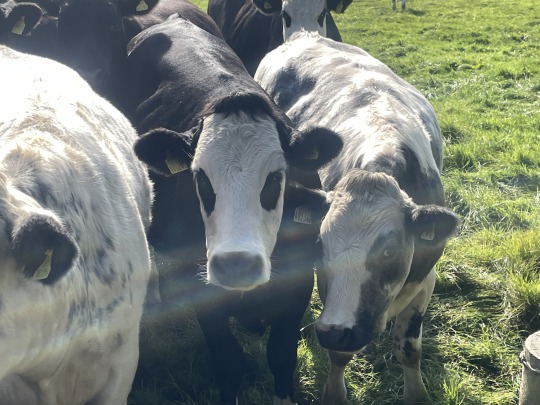
Checking the cow pasture as we walk to the lake this morning. We call this cow “Panda.” (She is the one in the middle.)

We made it home in time for tea, followed by lunch. Then the afternoon activities entailed visiting an old grist water mill. This is certainly not on the tourist maps.
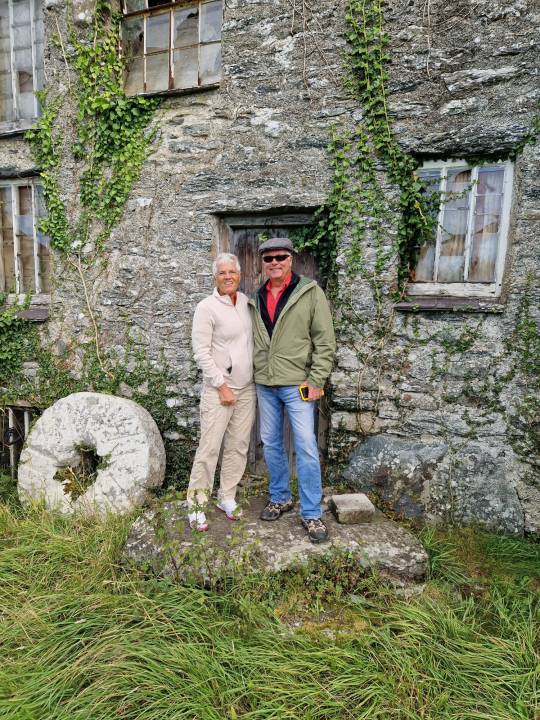

Then we visited the last wind mill in Wales, Melin Llynon. Originally built in 1776. They only let the sails turn in the wind on weekends now. Anglesey is renowned for its wind. Talking to the young man familiar with the windmill I asked how they set the sails out over the structure. They move each sail straight down and then access the lines and pulleys to move the sail cloth out or in. I asked how low the tip of the sail got to the ground to work on it. He said about shin high. Then he told story of a horse tied to a buggy that wondered too close. The horse and buggy were grabbed by the sail, flying over the top of the arc before being thrown clear.
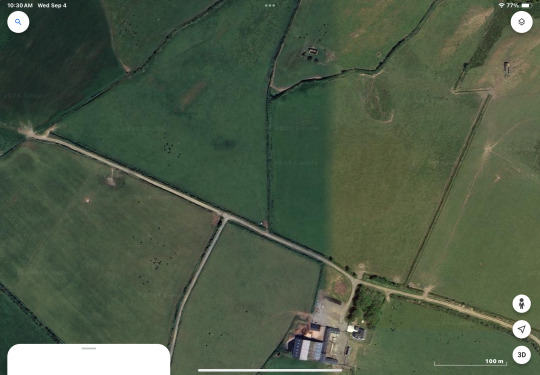
Driving home we tried to access the public walk to “The Old St. Mary’s Church.” Which is in a pasture. Neil tried getting us a close as he could. We decided not to enter the farmers pasture without their permission. After leaving he saw the farmers wife driving towards us. So he stopped and talked to her in Welsh. She told him which gate to use.

After a break at the house, Neil, Nancy and I went on a real adventure to look at the old church. This was our first two obstacles: mud and a herd of cows. The cows split up but kind of followed us down the pasture. One came galloping towards us.

Neil was sticking close to me as the cow pursued us. The old church is on the other side of the tree line behind us.
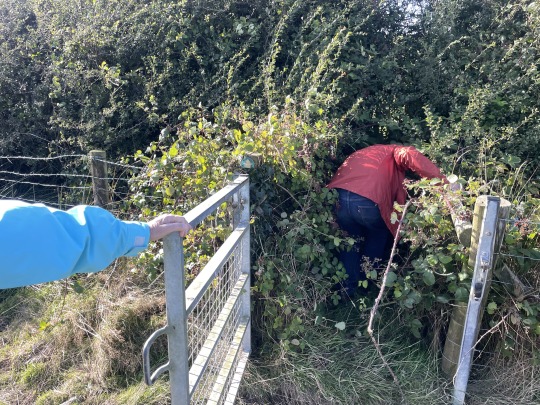
The farmers wife said, use the gate and cross over the bridge to the lower field with the church in it. This was the first gate and it worked fine. Problem was the blackberry bushes had completely overgrown the path. Worse was, the wood bridge had collapsed. Boards with nails were strewn about. So scrambling down the embankment and trying to avoid nails and thorns we made it to the other side. We could see the church. However this gate was locked with a chain and rusty bolt. While still trying to disentangle from more thorny branches we had to scale the gate and drop down to more mud and cow patties.

Watch your step!

We made it to the church unscathed.

This must have been the gate to the graveyard and church. Only a few slate headstones outside the church which was built in the 15th century as a “church of ease.” It is about 8 tenths of a mile west of St. Ceidio's church. But was considered easier to get to by some parishioners, possibly a wealthy family who didn’t want to walk all the way to St. Ceidio’s church. Walkimg a mile doesn’t sound like much. But three people perished in a snow storm walking between the two.
This church is only 30’ by 12’. The roof has completely fallen in. The interesting thing was a Viking headstone was used as the lintel over the east facing window.

This is from the plaque in town. We found the lintel but our photos were not good enough to see the vine engraveing.

There were several slate headstones attached to the wall.

The only remaining roof support standing.

The west wall with its bellcote will not be standing much longer.

In memory of Mary. Wife of William Lewis. of Gwredog-Uchaf
Who died March 12 1841.
Age 55 years.
(Gwredog-Uchaf is the nearest farm house a half mile north of the church.)

Nancy climbing over the locked gate on our way back to the truck.
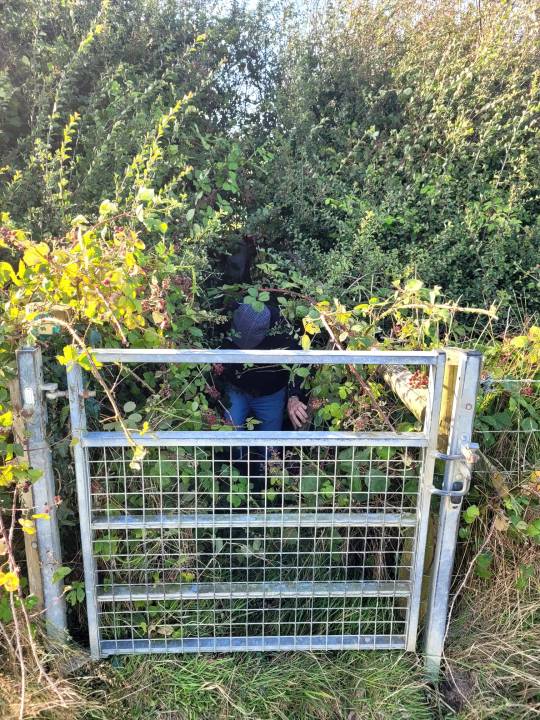
Dana coming up out of the ditch.
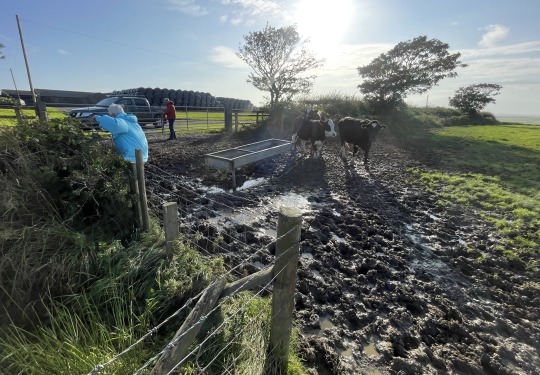
Nancy clinging to the barbed wire fence trying to avoid the deep sloppy mud and cow patties. So ends the great exploration of the trip. I doubt anyone has been to that church in 16 years.

Back for dinner and evening sitting in front of the fire watching “Rawhide” reruns. Beverley only allows Neil to watch it if company is over. She is tired of the series, obviously Neil is not. We were graced with Neil singing along during the show intro.
Move’em up, Head’em up.
Head’em up, move’em on.
Rawhide!
Keep them dogies rollin’, Rawhide………
1 note
·
View note
Text

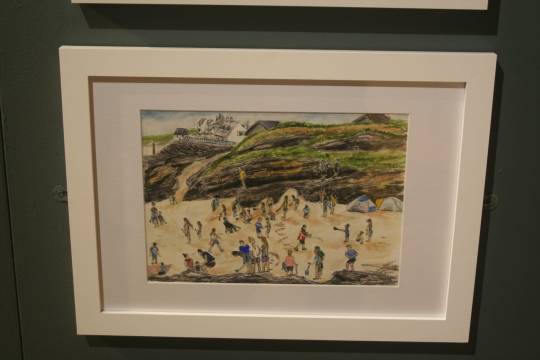
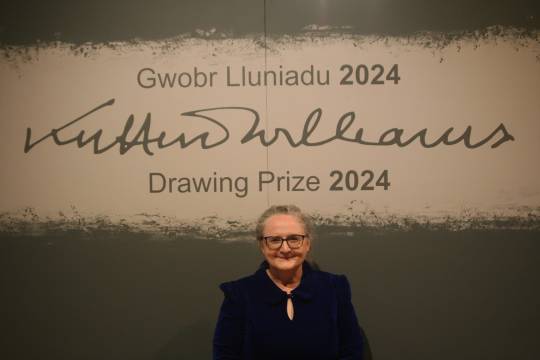
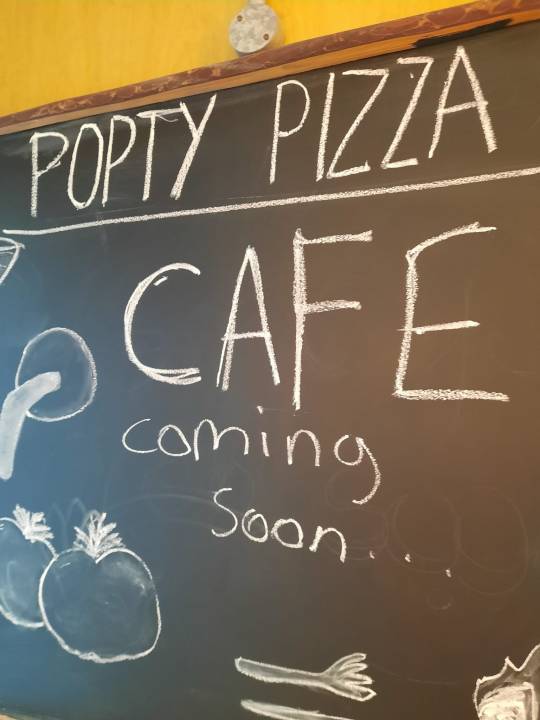


We had such a great evening yesterday, celebrating being shortlisted for the Kyffin Williams Drawing Prize! I didn't win. I didn't expect to. Ian Fisher's magnificent "Wales Dragon Map" very deservedly won. But I felt so honoured to be included in the exhibition at Oriel Môn (Rhosmeirch, Llangefni, Ynys Môn /Anglesey LL77 7TQ) - which is on till 7th July. If you can't make it there in person, all the drawings are here:
Mine's number 61 of the 77 pieces on exhibition (and sale) and shown on this website. Before the prize-giving, we popped into Popty Pizza (just next to Oriel Môn) for a quick change into gladrags and a quick but very delicious pizza. After, we headed over to Bragdy Cybi brewery in Caergybi/Holyhead, where we were made very welcome at an evening of song and comedy (in aid of Swtan, the wonderful c1900 Welsh longhouse at Traeth Swtan/Church Bay). The very best of Welsh hospitality! Diolch yn fawr iawn! Thank you very much! Sam aka LymphomaLass xx
0 notes
Note
"the anon who broke M style through PR.. is it the fashion anon plant had?"
(Meghan's TedTalk anon here) No, sadly, I am not Plant or her old fashion anon. I'm just one of those old-timers who's been lurking around since the beginning. I learned a lot about PR from Plant, though, especially how Hollywood PR works and how much Meghan lives in PR. It wasn't until recently that I realized how much Meghan believes her own PR that she's the BRF's main character and once I had that lightbulb moment, it all clicked into place. (I always knew Meghan believed in her own PR. You don't cringe through the Megxit manifesto's "The Queen doesn't own service" without understanding that. I think I just underestimated how much Meghan truly believes in these delusions of grandeur.)
The thing about Meghan and her PR cycles is that she uses them to create these fantasy versions of herself that she controls through her clothes. But these PR storylines are set up to fail from the very start because Meghan can't maintain the illusion when she doesn't get the attention she wants. When she doesn't get what she wants, the illusion slips. When the illusion and her control slips, her mess begins to show and she's built such a house of cards out of these PR storylines to cover her secrets and lies that it can be easily blown down. So to protect this house of cards from blowing away, she relaunches herself with new PR and a new style as only a main character would. It's basically using shiny objects to distract from danger.
This is why Tom, Sam, Kate, and the UK press are so dangerous to Meghan: they contradict her reality and make her acknowledge she isn't the main character. (Tom can prove Meghan's childhood was better than she told everyone. Sam can prove Meghan isn't the kind and compassionate person she claims to be. Kate can prove Meghan is a nobody. The UK press can back all of them up.)
Now Kate also dresses/styles for PR storylines but she's much more subtle and organic about it that it sometimes takes years and her "restyles" are linked to natural life milestones. Kate is only on her fourth PR restyle in 20 years of being with William. By contrast, Meghan is on her eighth PR restyling in 5 years of being with Harry. She first mapped her "restyles" to milestones to obscure all the schemes but she couldn't maintain the illusions because of her threats (Tom and the press particularly), hence her "smash and grab" hustling.
[In case anyone asks, here's my breakdown of Kate's PR restyling:
Girlfriend: 2002 - 2007 (from St. Andrews to the breakup)
Newlywed: 2008 - 2012 (Anglesey years) (yes technically Anglesey was 2010 - 2013 but PR-wise, Kate knew she was marrying William when she took him back after the breakup and it was reflected in her outfits)
Part-time royal: 2012 - 2017 (Norfolk years)
Duchess: 2018 - present (London years)
Based on Kate's history, her next PR restyle will be when she becomes the Princess of Wales. One could argue that that transition is already underway, which began with that portrait from Philip's funeral, but I think it's too soon to tell.]
Whew...I thought I lost this!
I learned a ton through Plant myself. I was so naïve about PR until Plant.
Remember in her Mexgit manifesto about how they will continue working alongside TQ and other senior royals? Someone pointed out that, NO ONE works alongside TQ but FOR TQ. This really showed me that they, Meghan, felt she was on equal, if not higher standing than TQ herself.
Remember her PR about what her jewelry meant? All of those gold rings she wore and how each one, plus the placement of each one meant something? I also remember when Meghan’s style started to slip, the wedding dress. I was flabbergasted that is what she went with. It didn’t match any of her PR style to date and it was so loose on her.
I never have really thought about Kate and her PR style because she does recycle clothing and tends to wear the same looks, but you have brought up a good point. I do think she is slowly transitioning into her PoW looks. The funeral and the 007 premiere gold dress.
Love having you stop by and providing your wonderful insight! Sorry it took a while to get back to you. I wanted to write more but you are so thorough that I don't have anything to add!
74 notes
·
View notes
Photo

1611 map of the island of Anglesey (off the coast of north-west Wales), by John Speed.
Speed was a tailor for most of his life, and during the early 17th century he produced an atlas and history of Britain under the patronage of Elizabeth I. His maps, first published in 1610 – 11, were extremely popular and were republished many times during the 17th century. They were very accurate, and many of the county maps included town plans.
22 notes
·
View notes
Photo

Isle of Anglesey, Wales (courtesy of Google Maps via MapCrunch)
1 note
·
View note
Text
Things to do on Anglesey
Things to do on Anglesey...looking for pocket friendly ideas for the family on your stay here?. Look no further. I've listed ten things you can do on Anglesey, pretty much for free..
Anglesey is the jewel in the Welsh crown when it comes to beauty and natural landscape. Anglesey or Ynys Mon in Welsh, is a island just off the coast of north Wales. It sits proudly off the north western coast of the UK, with the mainland Wales to it’s east and Holy Island to its west. It has a spectacular coastline that surrounds its 138 mile circumference. Home to the mythical druids and…
View On WordPress
#Anglesey#Anglesey beaches#anglesey beavches#anglesey boat tour#anglesey circut#anglesey coastal path#anglesey cottages#Anglesey events#Anglesey golf courses#anglesey hotels#anglesey island#anglesey knives#anglesey north wales#Anglesey restaurants#anglesey rib ride#anglesey uk#anglesey wales#anglesey Wales map#North Wales#North Wales Advetures#north Wales golf#north Wales holiday cottages#North Wales Hotels#north Wales pa#north Wales rock#north Wales weather#northwales
0 notes
Text
Guide to Galar: Predictions & Theories! (also a quick guide to British mythology?)
I’m hella stoked to see Britain get portrayed in a pokemon game and watching the trailer I was thrilled to see so many cultural landmarks!
Nothing has been confirmed yet, but I wanted to make a quick guide based on the information we have to far guessing what the locations are going to based on (and maybe even some guesses about the games story?).
So, starting from the bottom of the map!
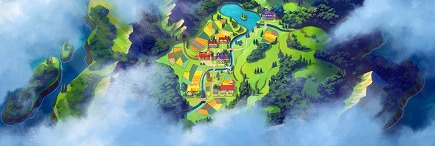
Looks like we’re going to be starting off in a small rural town surrounded by a patchwork of field (no shortage of those in Britain), with an island on the left and a big forest on the right.
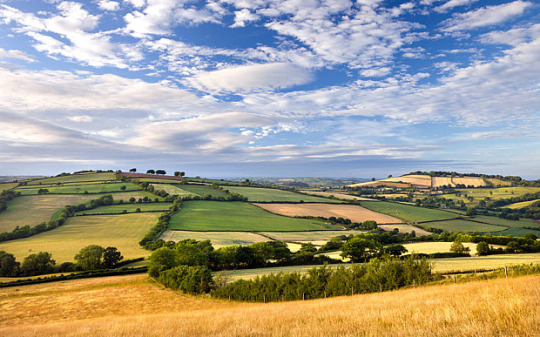
The river running through the town interests me because there’s an island in the lake. Given the games will be called ‘Sword and Shield’, I’m thinking there might be some mythology based on the ‘Legend of King Arthur and the Knights of the Round Table’.
The game might start with something inspired by the Arthurian mythos, such as the Lady of the Lake (who lives on an mystical island the the middle of a lake, called Avalon) and Excalibur. There are several lakes in Britain (particularly in Wales and the South-West) associated with these myths, such as Dozmary Pool (Cornwall).
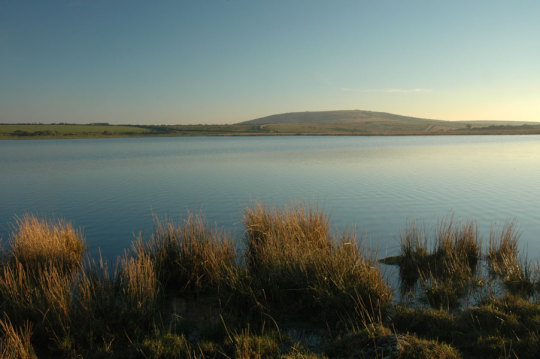
As for the Islands on the left, there are several small islands surrounding Britain, like the Isle of Man, and Isle of Wight (there are also many Scottish ones!). There’s not much visual info to go off at the moment so it’s difficult to say at this point.
As for the forest, there are several forests throughout the countries, so again, based on limited information it’s difficult to say.
However (if the Arthur theory is correct) it could be based on the mythical forest of Broceliande. Alternatively it could be like Sherwood Forest (Nottinghamshire), famously associated with the legend of Robin Hood. Other famous British Forest include the New Forest (Hampshire/Wiltshire), Thetford (Norfolk/Suffolk) and Galloway Forrest (Scotland).
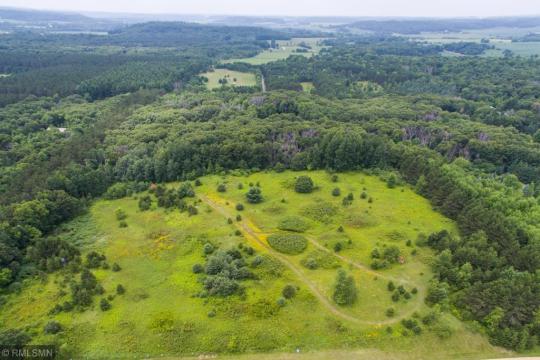
Moving on!

Okay so I’m c o n v i n c e d this region of the map is based on the Peak District and the Lake District.
The Peak district is a national park in the north of England - characterised by its highlands and hilly/mountainous areas. The Lake District (have a lucky guess what that’s famous for), is a national park located in Cumbria.
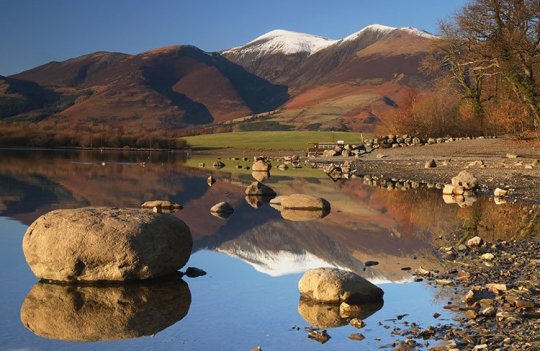
Between these two regions there also appears to be a large stone of some kind. I can’t think of an exact match for this, but it could be inspired by the various Tors (big natural rock formations),which there’re particularly a lot in Devon and Cornwall). Alternatively it could be a formation such as the Old Man of Storr or a man-made formations like the ancient Orkney Standing Stones (both in Scotland).
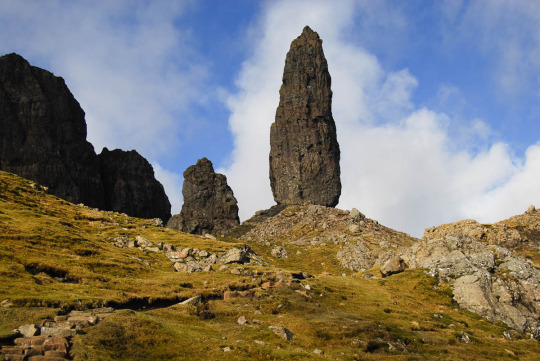
On to the Middlands (kinda?)

So next we have a big city! The most obvious guess would be London, and that is highly likely given the focal point is a big-ass clock-tower, like Big Ben (aka Elizabeth Tower). The shape and the fact the river runs around it is also reminiscent of the Tower of London!
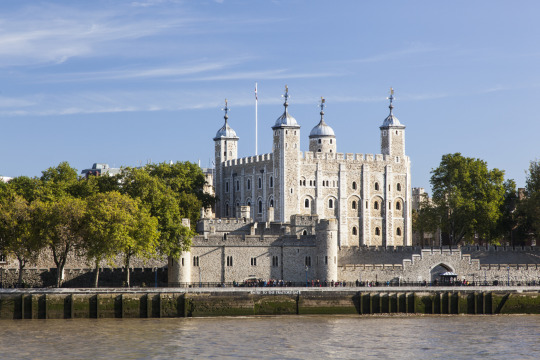
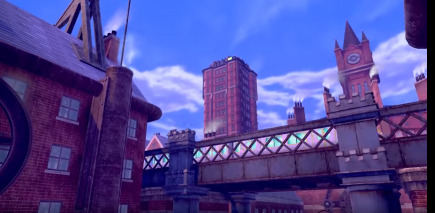
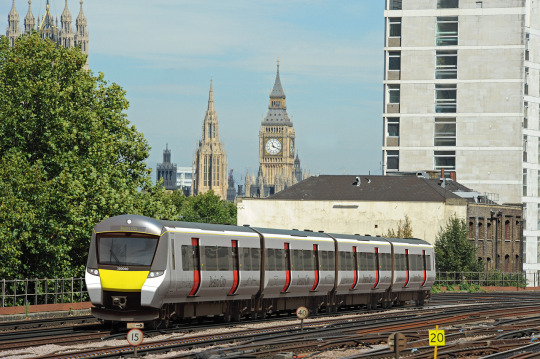
Although, I can’t hep but feel like the architecture looks very ‘industrial-revolution-esque’, particularly with all the red-brick. This makes me think of cities like Birmingham and Manchester. So maybe some mixed influences here?
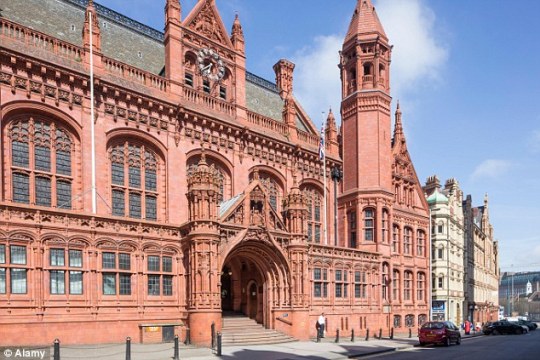
(Birmingham has several of red-brick Victorian buildings like this)
To the left of this city, appears to be a rocky area, which I think could have been inspired by Cheddar Gorge - most famous for cheese!
Its also famous for a legend about a witch!
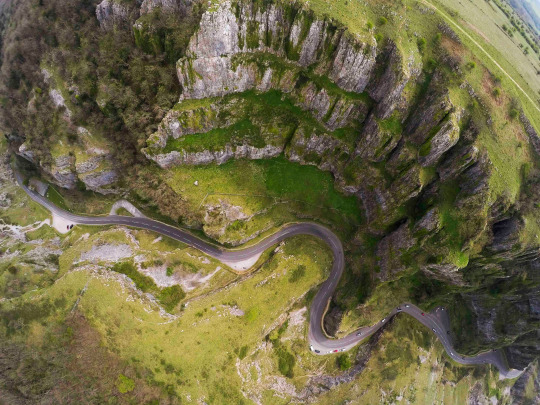
Wookey Hole, a cave located in Cheddar Gorge, had a creepy looking stalagmite inside, which local folklore says is the remains of a petrified Witch. It does look like there might be a cave on the map, so I really hope this theory turns out to be correct! (I <3 witches)
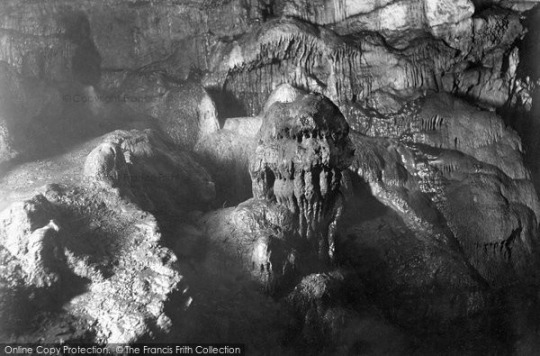
(the infamous Wookey Hole Witch)
There is also a town surrounded by yellow fields, which I guess are either wheat or oil seed rape (unfortunate name, i know).
This also appears to be the location of this thing:
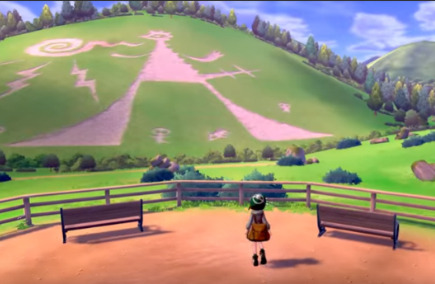
So, this is based on the various ‘Hill Figures’ which are found in several locations around the UK. Horses and men are among the most common images. This practise is believed to date back to ancient times, however the only ones visible, that have survived until today, are only a few hundred years old.
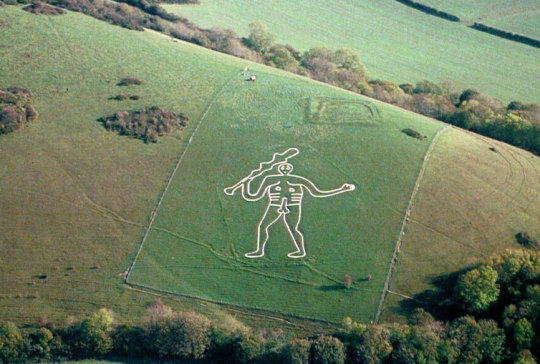
(’Rube Man’ or the Cerne Abbas, in Dorset. believed to date back to around the 17th Century.)
True British heritage is carving a giant man with his dick-out into the side of a hill and I think that’s beautiful.
Moving on, to the right of the city looks like a valley with a railway-line running through it. This could be based on the Glenfinnan Viaduct, located on the West Highland Line (Scotalnd). This was the bridge they use for the Hogwarts Express in the Harry Potter movies!
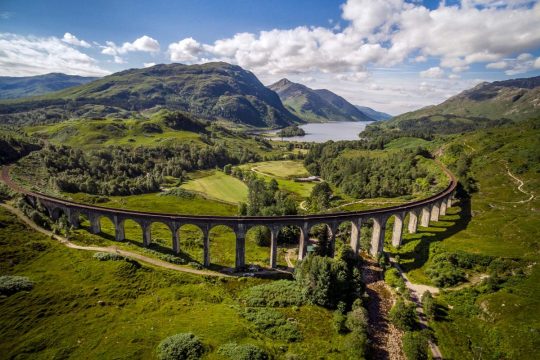
There is some more stuff on the left, which looks like a valley or field and a seaside town, but its difficult to make out the details so it could be anywhere.
Moving on...

Sweet, another city! Although its not immediately obvious to me what this one is based on. It looks very industrial so maybe Birmingham or Manchester - or even Edinburgh. Honestly this one has stumped me a little bit, so I’ll just wait for a bit more info on this one!
To the left it looks like this might be where the mines are!
Britain used to have a big mining culture, especially in certain regions (e.g. the North of England, Wales and Scotland). Many closed in the 1970s, so there only a handful still in operation today and they have now been largely industrialised with machinery.
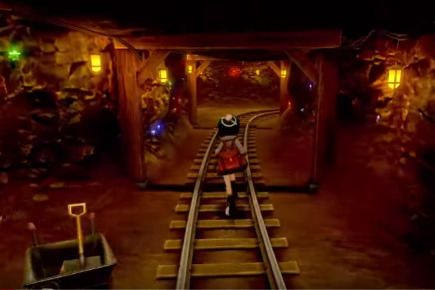
Most mines in the UK are/were for fossil fuels or metals, rather than gems, but I don’t blame Pokemon for making that amendment!
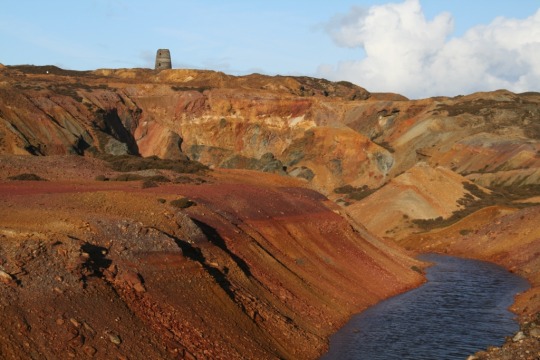
(This is a copper mine in Anglesey, Wales - which i think vaguely could resemble the one on the map).
Behind the mines (or what i think are the mines) looks like another forest, so I’m going to keep the same guesses as I had for the other one.
On the right, there’s a hilly coastal area, with a building on it. Maybe its a coastal ruin of a castle like, Tintagel (Cornwall) or Hastings (Sussex), although its hard to make out so that’s just a guess.
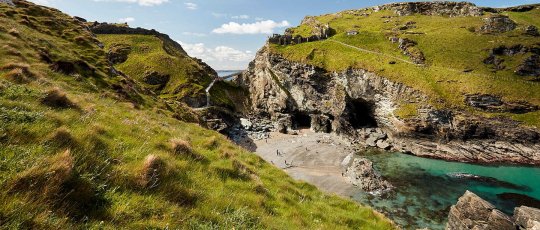
Above that, it look like a snowy, inlet-y coastal town! Very reminiscent of the island-y areas of Scotland! Maybe somewhere like Stornoway...
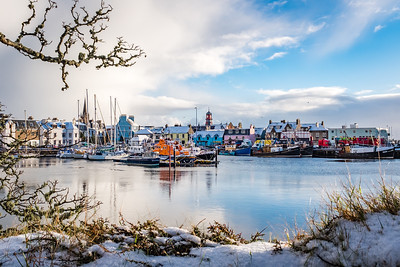
Now that big wall and the rock next to it that looks suspiciously like a volcano! Britain has no active volcano’s, but does have several dormant ones, particularly in Scotaland.
The one on the map looks a bit like it could be Arthur's Seat, a volcano located close to Edinburgh (possibly supporting that the city next to it is meant to be Edinburgh) .Back to Arthurian mythology again; the mountain range is one of the suggested locations of the legendary kingdom of Camelot!
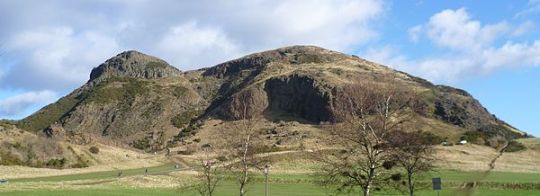
On the map, its unclear if the wall is part of the volcano/mountain range, or if its a wall in its own right.
It could represent Hadrian’s Wall, built by the Roman’s in 124 AD, (to keep the Scots out of England/Britannia!). The wall is a lot shallower then the one on the Galar map though, and it doesn’t really look like it, but it could still be the inspiration.
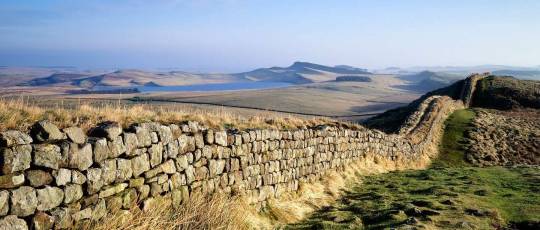
Okay last section!
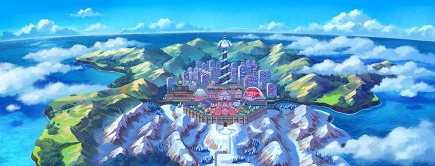
So this entire top area is very snowy and mountain-y. I think its safe to say this is mostly inspired by Scotland, which is usually a lot colder and has rougher terrain than down south in England (they call them the ‘highlands for a good reason’).
Britain’s highest mountain, Ben Nevis is located in Scotland, as well as several other mountain ranges. Inspiration could have also been taken from the mountains of Snowdonia, in Wales.
As for the city itself, it looks like its going to be a very important (probs where the champion league equivalent will be), but I can’t confidently identify any recognisable landmarks on the picture.
There looks like another smaller Big Ben-inspired building to the side, but the central feature is tall spiral tower, which I don’t recognise (the closest thing I can think of is the Orbit Tower - from the London 2012 Olympics - although I’m not entirely convince this is what it’s meant to be...).
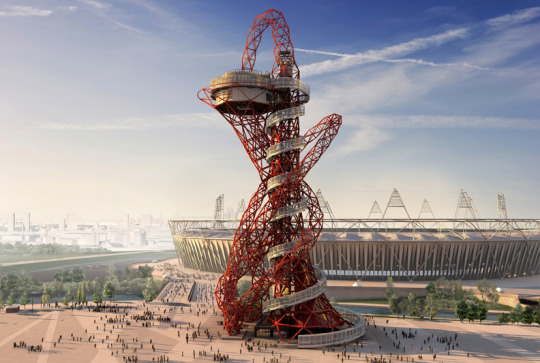
Well that’s about all we have to go off for now!
Sorry if this was a bit rambley, I just got so excited to see that they're representing so many different places! Sometimes I feel like Britain just gets reduced to London - which is a shame because the natural landscape of the isles are so varied and rich with culture and folklore!
I really hope Sword and Shield take lots of inspiration from the myths. I would love it if the King Arthur inspired story turned out to be true!
Anyway, I guess we’l just have to wait and see~
#pokemon#sword and shield#pokemon direct#pokemon galar#pokemon 2019#galar#longpost#travel#britian#location#folklore#mythology
110 notes
·
View notes
Text
August 19th, 1997
Crossing the Bridge
Somewhere Else Under the King
In today's entry, Martin gets a geography lesson that causes an epiphany:
Martin is grateful for the glossary and index in the back of the annotated scriptures. It’s made understanding and checking for references in Jackson’s poetry much easier. Not that it’s been particularly helpful with inspiration for a collaboration yet, but it’s a place to start.
He’s checking on references to lovers today, which is an easier topic than it had been but not exactly great. It’s not like he hasn’t been going to see Jon, and they’ve been talking on the phone in between visits. (Though nothing’s topped that particularly awkward call when he learned that Jon’s feelings for him have become psychically contagious. He’s resolved to stay off the internet until he can search his name without wishing for a safe for work filter.) It’s almost something approaching normal, even more so than suddenly running off to Scotland to hide for a few weeks. This is something that roughly resembles proper dating. But something seems just out of grasp.
He opens up to the one chapter referenced in the index, but he stops reading and slams the book shut almost immediately after he starts.
Okay. He was expecting some of that considering he already knew about Jackson’s use of the term Lonely Lover, but he definitely wasn’t expecting everything he got in that little glance. Right. Jon will want to know about this. Which means he should probably read at least a little more of it now. He opens the book and tries again.
“Guess what?” Jackson practically sings as he sails into the library. “That tabloid article I found before actually was about Jon and we didn’t know it!”
Martin won’t say no to the distraction and looks up from the book. “You’re kidding.”
“No! They actually ran a correction for it so they don’t miss out on the ‘man suddenly appears out of nowhere’ story. They think he’s disappeared instead of just left Clanbronwyn for London, though, so it’s not like they’re completely reliable. But still, isn’t that a kick?”
“Clanbronwyn?” Martin asks. Sounds Welsh, and he doesn’t exactly have every place in Wales memorized or anything, but something about the name feels odd.
Jackson nods. “It’s an island off the Anglesey coast of Wales.”
A chill starts to trickle down Martin’s spine. “Has there always been an island there?”
“Well, technically, it used to be a peninsula, but it’s been an island for as long as I can remember,” Jackson answers. “I can show you on a map if you like?”
“Could you?” Martin asks. “Please?”
Jackson goes to track down an atlas or map, which fortunately doesn’t take long. He opens the atlas and shows Martin the page with Wales. And right there, off the northern coast, is a dot that Martin’s never seen before neatly labeled, “Clanbronwyn.”
The sensation that had been trickling down fully hits him at that moment. The hazy, dreamy state of surviving in this new life has melted away, and a new reality settles in. This is different and permanent. There’s no going back, and there never was. This is a world that he thought he knew but really doesn’t. A world that is similar but entirely different that he’s been pretending in.
A heavy, cold pit of guilt sinks in Martin’s stomach.
He had been completely on board to doom this world to the Entities.
Not only does he not know if the world he will never see again is no longer hell, will never know if that world is no longer hell, this world where he’s living now nearly became hell, might still become hell. Is there a world that is in hell now? A world like this, with people like Jackson, Claire, Trilby, Jim, Lydia, Jessica, and Frank all just trying to live their lives? They’re just as real as anyone from the world he knew.
What happened to his world wasn’t right, and they were caught between two wrong choices, but at this moment he can’t stomach the idea of dooming this place.
And Jon was the only one to see that at the time.
He even brought it up in their row that this world wasn’t fucking ending when he was the one who had chosen to risk that! It took living here nearly a month for him to see it! And right now he can’t see anything else!
“I have to go,” he tells Jackson, getting to his feet and rushing to his room.
“Martin?” Jackson calls after him. “Martin, what’s wrong?”
But Martin is gone without an answer for him.
-
Martin hurries to Jon’s flat, urgently knocking on the door. He can’t just let himself in, not for this.
Jon answers the door with a soft, annoyed, “Yes?” before recognition kicks in. He lights up with bemusement as he says, “Martin! You don’t have to knock, I gave you a key...” By the end of his sentence he’s taken in Martin’s state of distress. “What’s wrong, love?”
“I’m so sorry,” Martin says, shuddering.
Jon takes his hands, gentler than he feels he deserves, and leads him inside the door. “Sorry for what?” he asks as he quietly closes the door behind them.
Martin shakes his head a little. “For not… not listening to you.”
Jon softly squeezes his hands, keeping his hold steady. “What do you mean?”
“I mean here!” he says, taking one of his hands back to gesture to their surroundings. “This world. Other worlds. Knowing what can happen to it, what I was willing to let happen to it! I didn’t think about it or didn’t want to! And now I can’t stop thinking about it!”
Jon watches him a moment as understanding seeps in, then he stays silent and allows Martin to continue if he wishes.
“I’m so sorry, Jon,” Martin says again, the words rough from the start of a crying jag. “I’m sorry I let you stand alone on that, didn’t even stop to consider it. And the way I’ve been acting here, god, I can’t even imagine how selfish you must think I am, not even thinking about it until we’ve been here a month-”
Jon fiercely pulls Martin into his embrace at that, cutting the thought off there. Martin holds him tight in return, adjusting slightly when he hears a stifled moan of pain.
Jon places a hand on the back of Martin’s head, softly stroking his hair. “Martin,” he says, his voice the gentlest Martin’s ever heard it. “Do you remember what I said when we talked about what happened before? I trust you. I’ve already forgiven you. I still mean every word of that.”
Martin shivers as he hides his face in Jon’s shoulder.
Jon eases them down so they’re both kneeling on the floor, still stroking Martin’s hair and now rubbing soothing circles in his back. “My love,” he says. “I’m just as selfish as you.”
Martin hiccoughs at that.
“However we want to judge our choices, they brought us here,” Jon tells him, pressing as close to Martin as he can. “And at least for right now, I don’t care how selfish it is that I don’t regret that. I’m here with you, and that’s all I want. So- so if I can be selfish about that, I don’t see why you can’t be, too.”
The two stay like that for a little while, Martin crying and Jon trying to soothe him with soft words and gentle caresses and tender kisses. Maybe he was looking in the wrong places for closure, maybe closure is just a myth, but he feels the shift from this exchange. It feels like finally moving forward, in tiny steps but moving somewhere better. Maybe that’s too hopeful, but as much as it’s hurt before, his hope hasn’t failed him on this yet.
“Can I stay?” Martin asks once his crying subsides.
“Of course you can,” Jon answers. “You can always stay here.”
One pizza delivery for dinner later, Martin picks up his bag and digs through it for his work.
“Do you plan to stay the night?” Jon asks, a touch of hope in his voice.
“For a few nights, if that’s okay,” he answers, finding the book he wants and setting it on the table. “I’ve been getting-” He interrupts his thought with a sigh. “-some worrying information from my boss? And I wanted to let you know about it.”
Jon turns the book to check the title. “The Annotated Books of Chzo?” he reads aloud.
Martin nods. “It’s not like Leitner-dangerous, just cult-dangerous. Heard about the Order of the Blessed Agonies yet?”
Jon frowns. “Some from Trilby, but he doesn’t know much, either. Just enough to know we don’t want to deal with them.”
“Yeah, that’s not wrong,” he agrees. “My boss used to be a member, and his family’s all over them, so some of his poetry’s inspired by it. Which, that’s whatever, poetry’s good for processing that kinda thing. But then I got to a chapter at the end of the Book of the Bridge, and things got uncomfortably familiar.”
Martin reaches for the book and opens it at the bookmark sitting in it. The chapter in question is titled, “The Lovers’ Bridge.”
Jon reads for just a few seconds before recoiling. “There’s a Watchful Lover?!”
Martin winces and says, “Yeah. Don’t think we can just dismiss Letters From the Lonely Lover as a coincidence anymore.”
Jon checks the page again and asks, “When was this written?”
“Originally? 1779 by Jack Frehorn,” Martin answers. “The book’s split between history and prophecy, not really surprising with religious texts. Don’t know when this annotated version was first done, but I’m pretty sure Dorian Lovelace is my boss’s father.”
Jon skips ahead to see how far the account goes, face growing more severe as he does. “So, what does this mean for us? If it’s all true and we’re the ones it’s talking about, that is. Is your boss trying to recruit us? Is the cult interested in us?”
Martin leans his head into his hand. “No and probably not. That’s the thing I don’t get: the cult full on believes the prophecies, even thinks some of them have already happened, but they don’t care about this one. Jackson said it’s a missing chapter in most prints.”
Jon turns the book so he can flip open the back, finding the index. “Do you know about anything the cult considers as one of the prophecies coming true? Any real events tied to them?”
“Not beyond the annotations,” he admits. “I’ve been focusing more on the concept of agony itself. So, y’know, having loads of fun with that.”
“Let me find some paper,” Jon says, getting up and heading to his room. He comes back with a notebook and a couple of pencils and wastes no time getting to work, flipping sections back and forth as he combs through the book.
Martin sits and watches him, aching at how easily Jon sinks into it like he did in the archives. “Guess the good news is if it’s a prophecy that’s already happened, there isn’t exactly a deadline to figure anything out.”
“Makes sense,” Jon says. “Prophecies like this aren’t really for the people they’re about, are they? Usually they’re a warning for someone else.” He keeps reading, and it’s not long before his breath hitches.
“Ah, I haven’t read the whole thing,” Martin admits. “What is it?”
Jon exhales through his nose and taps at the words with the back of his pencil. “It’s getting more familiar as it goes on. ‘That Blessed Agony of Loneliness.’ Not hard to tell what that was. Have to admit, Frehorn captured the spirit of my thoughts even though I wouldn’t have been able to articulate them like this.” He softly reads aloud, “’I see you in your Loneliness, and I will take you away from it to be mine.’ Sounds about right.”
Martin makes a little surprised huff, his cheeks going red. “Well, when you say it like that ...” He reaches and gently takes Jon’s free hand.
Jon laces their fingers together and puts his pencil down. “Maybe that’s enough for tonight,” he says. “I don’t know if I’m ready to look at the next part, anyway.”
“Jonathan Sims calling it a night early?” Martin laughs. “It really is a whole new world.”
“To be fair, his boyfriend’s had a hard day and he doesn’t want to keep him waiting,” Jon replies before pulling their hands up and leaving a kiss on the back of Martin’s.
The phone rings, interrupting the peaceful moment.
Jon sighs, squeezes Martin’s hand before letting go, and says, “I’ll be right back. Might take it off the hook after this call.”
“Won’t say no to that,” Martin agrees as he closes things up and stacks them together.
-
“Jonathan Sims.”
“Jon! So glad to finally speak with you. This is Jackson, Martin’s boss?”
“Ah, yes, he’s mentioned you.”
“Sorry for disturbing your evening, but Martin’s listed you as his emergency contact. He left work suddenly today looking very distressed and hasn’t been answering his cellphone. Is he all right?”
“Yes, yes he’s fine now. He’s with me.”
“Good,” Jackson breathes with relief. “Could you let him know there’s no rush to get back? If he needs a break or if he’d rather work there, that’s no problem.”
Jon nods unseen and says, “I’ll pass the message along.”
“Thank you, Jon. Have a good night.”
“Yes, good night.”
1 note
·
View note
Photo
[Map titled "British Isles about 802." (Though only half of Ireland is visible.)
Map is divided by colour into "States of the Angles," "States of the Saxons," "State of the Jutes," and "states of the native Britons: Picts and Scots." (I believe 'Scots' is being used to refer to Gaelic-speaking peoples.)
Kent, in the South-East, is the only Jute state.
Wessex (all of South and South-West Britain), Essex, and Sussex (north and south of Kent), are Saxon states. The very west of Wessex is called West Wales, and is both Saxon and Pict.
Ireland is depicted as one 'Scottish' state, despite being 5 separate regions (albeit regions with unclear and shifting borders).
Scotland is divided into Pictish Pictland (north), 'Scottish' Dalriada (taking a chunk out of the south-east of Pictland), and Britonish Strathclyde (Galloway in the south of Scotland, and Cumbria in the North-West of Britain).
The Isle of Man and Isle of Anglesey are 'Scottish' states.
North Wales (west of central Britain) is also a 'native Briton' (Celtic/Kombroges) state.
Anglish states are Northumbria (north-central, including Lothian in modern south-east Scotland), East Anglia (east-central), and Mercia (central).
End ID.]
The map should probably be labeled "Great Britain" rather than "British Isles," given it's treatment of Ireland. And it would be cool if the different 'native Briton' peoples were separated. But I like being able to see at a glance that there's only one Jute territory! And I really like how county names become somewhat transparent this way:
Wessex, Essex, and Sussex are "West-Saxon," "East-Saxon," and "South-Saxon" kingdoms.
East Anglia is a "East Angle" kingdom.
Mercia is a Latinization of 'march' ('border territory', where the aristocratic titles 'Marquess' and 'Marchioness' come from)
Other cool naming stuff related to Great Britain:
Wales, Gaelic, Gaul, Cornwall, and probably many other names in the area come from the Germanic root '*walhaz,' which meant 'Romance (Latin-speaking) people!' (Well, it originally meant a specific Celtic tribe in Eastern Europe - but most of Europe was part of the Roman Empire, most of the Roman Empire spoke Latin, and who can tell the weird Latin-speakers apart?)
'Gaul' is from 'walhaz', but 'Gallia', the Latin name for the area in France that the Gauls lived? And 'Galloway', in Scotland? Those are from a different word! Which is possibly related to 'Celt?' The Irish of this period sometimes made jokes about 'Gaels' vs. 'Galls.'
Cumbria and Northumbria are not related terms
Cumbria, Cambria, Cumberland, and Cymru (proper names of Wales) are all related to the 'Kombroges' people
Norfolk and Suffolk, land of the "North Folks" and the "South Folks."
Maps and languages are both a lot of fun.

Peoples of Britain and Ireland, circa 802 AD.
#cartography#history#linguistics#(vastly simplified linguistics)#etymology#described#originally reblogged to whine about the treatment of ireland#but linguistics is to cool and I happily got distracted
356 notes
·
View notes
Text
Top Spas in north Wales
Top Spas in north Wales
North Wales spas offer an excellent opportunity for you to get some rest and relaxation time, and to wind down from the hectic and modern world during your stay. Rest and relaxation in the western world is not taken as seriously as our eastern counterparts. Our health is the most important asset that we have along with time. Therefore It’s important to prioritise more breaks and periods of…
View On WordPress
#Anglesey beaches#anglesey beavches#anglesey boat tour#anglesey circut#anglesey coastal path#anglesey cottages#Anglesey events#Anglesey golf courses#anglesey hotels#anglesey island#anglesey knives#anglesey north wales#Anglesey restaurants#anglesey rib ride#anglesey uk#anglesey wales#anglesey Wales map#anglesey weather#attractions#Autumn#bamboo#bangor#bass#bass fishing#beach#biking#boat#bouldering#cafes north wales#cafes snowdonia
0 notes
Photo

Fondly remembering my late father on this day 9/19/40 - 2/6/14 Hon. Arthur J Griffith Remembering him with the things he loved most... His "toys" and his final work Our family Hotel/Lodge in the mountains He was also the town's first elected Mayor. He was a businessman and a developer but in the early part of his life he was also a well respected designer. His campaigns included the Esso/Exxon Tiger Campaign and he was the senior designer in the firm he was partnered in that brought the original Coppertone girl to life, from the mothers sketch. His work also included many of the maps and logo for Florida Power & Light. At 14 he built a boat in shop class and that summer sailed it to the Bimini Islands and spent the summer working there. He also bought his first home and paid cash for it at 18. He came from a long line of industrious and talented business owners. His Paternal grandfather, Dr. Arthur James Griffith, was a highly respected Physician in Georgia and his Maternal grandfather; Jose Piro Canales, was a businessman in Spain. His Uncle was the foreman behind the iconic Stone Mountain, in Georgia. His paternal 6x Great Grandfather; Captain Robert Griffith Sr., of Llangadwaladr, Anglesey, Wales fought and died in the French & Indian War on July 9th 1755. Direct lineage dates back before 1000 AD in Wales. (at Magnolia Emporium) https://www.instagram.com/p/B8Pc1QrJA9-/?igshid=ty1jhyym3ndx
0 notes
Text
Ice Age evidence bulldozed from beach

Image copyright Gareth Phillips
Image caption The huge boulders on the beach gave vital insights into how glaciers behaved
A "critically important" site of scientific interest has been "destroyed" by council workers on an Anglesey beach, it has been claimed.
Huge boulders dating back to the end of the last Ice Age were moved as flood relief work was carried out on Lleiniog beach at Llangoed, residents said.
They also claimed post-glacial peat beds were ruined by bulldozers.
Natural Resources Wales said it was investigating but Anglesey council said it had a licence for the work.
Gareth Phillips, a member of Friends of Llangoed Community Group, said: "It's one of the most daft and tragic things I have ever seen done in the UK."

Image copyright Gareth Phillips
Image caption Shaped blocks of limestone which have now been moved
Lleiniog beach, which runs along the Anglesey shore of the Menai Strait, was strewn with huge boulders which gave vital information on how glaciers behaved.
Natural Resources Wales says the site provides "some of the clearest evidence in north Wales for an incursion of Irish Sea ice during the Late Pleistocene", the last Ice Age.
It describes Lleiniog as an important site for studies of the quaternary period, the most recent period in geological time when the Ice Age occurred.
Anglesey county council workers had a licence to clear out the mouth of a small river to prevent flooding of a nearby road.
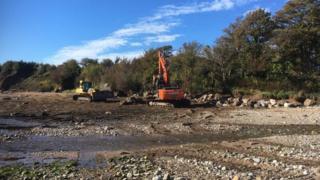
Image copyright Gareth Phillips
Image caption Large diggers on the beach moved the boulders
But after working on the mouth of the stream, "they went down 200 yards on the beach and scooped up boulders of scientific interest", Mr Phillips said.
"They had no reason and no licence to be there," said the retired health professional with a keen interest in archaeology and geology. "The local community has been distraught about it."
Euros Jones, operations manager for north west Wales at Natural Resources Wales, said the Welsh Government and Natural Resources Wales were investigating reports of damage to the site and looking into whether the work breached the conditions of the licence.
It is also investigating whether the works damaged important features of the site.
An Isle of Anglesey County Council spokesperson said: "A Marine Licence from Natural Resources Wales was in place to undertake these works. We also confirmed to Gwynedd Archaeological Planning Service that we were not working in the area marked protected on their maps referencing the scheduled monument fish weirs."
Related Topics
Archaeology
Isle of Anglesey County Council
Original Article : HERE ; This post was curated & posted using : RealSpecific
=> *********************************************** Learn More Here: Ice Age evidence bulldozed from beach ************************************ =>
Ice Age evidence bulldozed from beach was originally posted by 16 MP Just news
0 notes